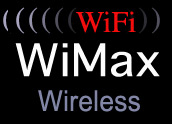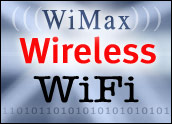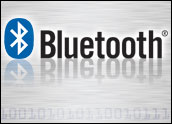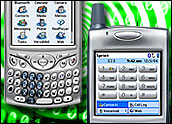
Mobile phone network operators are responding to the competitive threat of free WiFi, progressively adding new technologies to their networks to improve the wireless coverage they offer, according to new research.
Small cellular base stations designed for use in residential or corporate environments, called femtocells, are being adopted by operators with “great enthusiasm” out of fear of free WiFi offerings.
Network providers believe the technology will increase network efficiency and reduce loss of customers. It will also improve in-building wireless service, and give them the ability to build platforms upon which fixed-mobile convergence services can be realized.
Many Benefits
“Femtocells offer many benefits to operators,” said Stuart Carlaw, an analyst with ABI Research.
In just four years there will be 102 million users of femtocell products on 32 million access points worldwide, according to a new study from ABI Research.
“From a strategic and financial standpoint, the routing of traffic through the IP network significantly enhances network quality and capacity, and reduces the OPEX (operational expenditures) that carriers expend on backhaul,” noted Carlaw. “On a conceptual basis, femtocells allow carriers to aggressively price cellular data services in the home, with the ultimate goal of shaping consumer behavior.”
From a technological standpoint, better in-building coverage for technologies such as WCDMA and HSDPA is an incredibly important aspect of service delivery for wireless carriers, explained Carlaw.
“The most interesting characteristic of femtocells is that they can form the basis of a viable option for realizing converged fixed-mobile services,” he added. “They give operators a cost-effective way to support fixed-mobile substitution, as well as a platform in the home upon which additional features such as WiFi and IPTV can be layered. “
This is a very nascent market, and, as such, there is a pressing need for some standardization, or “at least a common recognition of what a femtocell’s minimum requirements should be,” said Carlaw.
Global Relevance
This kind of technology will be useful not only in the U.S., but overseas as well, where cellular phone companies are also encountering competition from WiFi.
Singapore is launching a nationwide WiFi network that will let users receive a network connection to the Internet. “At the end of the year, Singapore will be one mega-hotspot,” said Bill Chang, the CEO of SingTel, the telecom company launching the new network.
Last year, Singapore began its “Intelligent Nation” program, aimed at turning the country into one of the world’s leading technology-focused nations. Singapore is focused on becoming a leader in communications technology, and the island nation is well on its way to becoming an international case study. The mega WiFi network there will be based on WiMax, which is a high-speed, reliable and robust wireless standard being pushed by Intel and other companies.
Singapore already has a nationwide WiFi network setup, and for every square kilometer of the country, there is one public hotspot.
Similar projects within the U.S., and other projects worldwide are emerging as well, posing a threat to wireless carriers. For example, Google is launching a city-wide wireless network in the San Francisco Bay area. Another project is nearing completion on the wireless network in the city of Mountain View, Calif.
Old Technology Hanging In There
Though cellular carriers are threatened by the new WiFi technology, that does not mean that they have given up their own expansion plans.
The association representing the European-developed GSM mobile phone standard, 3G Americas, last week said that nearly 100 million new subscribers signed up for GSM technology in the Americas in the past year.
Research firm Informa Telecoms & Media recently reported that 2 billion of the world’s 2.41 billion cellular subscribers were using GSM, and 3G Americas expects heavy GSM growth in Latin America and the Caribbean to continue.
“Brazil alone added 21 million new GSM customers in the year ending June 2006,” said Erasmo Rojas, 3G Americas’ director of Latin America and Caribbean. “CDMA technology growth is losing its momentum in Brazil and across the Americas region.”










































